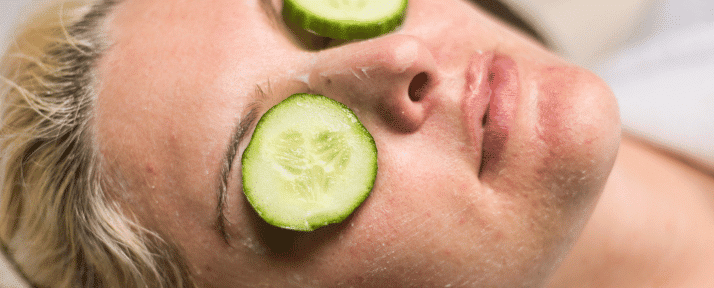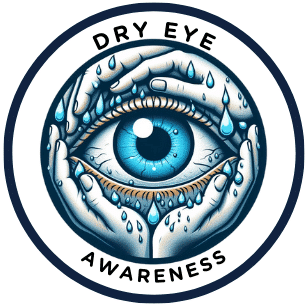
Dry eyes, a common condition affecting millions of people worldwide, occur when the eyes fail to produce sufficient tears or evaporate too quickly. It can lead to discomfort, blurred vision, and irritation. However, the good news is that various treatments are available to alleviate the symptoms and improve the overall health of individuals suffering from dry eyes. This article will explore dry eye treatments that work, ranging from self-care remedies to advanced medical interventions.
Self-Care and Lifestyle Modifications
- Warm Compresses: Applying warm compresses to the eyes helps stimulate tear production and reduces eye dryness. Apply a warm compress over your closed eyes for several minutes, and repeat as needed.
- Blinking Exercises: Regularly blinking your eyes helps spread tears across the surface, preventing dryness. Practice consciously blinking more frequently during activities that require prolonged visual concentration, such as working on a computer or reading.
- Humidifier: Dry indoor air can exacerbate dry eyes. Using a humidifier in your home or workplace adds moisture to the atmosphere, reducing eye dryness and irritation.
- Environmental Modifications: Avoiding or minimizing exposure to factors contributing to dry eyes, such as smoke, wind, and excessive air conditioning, can significantly improve symptoms. Using wraparound sunglasses can protect from wind and dust when outdoors.
Over-the-Counter Dry Eye Treatments That Work
- Artificial Tears: Lubricating eye drops, also known as artificial tears, are widely available over the counter. They help alleviate dry eye symptoms by providing moisture and lubrication to the eyes. Various formulations are available, including preservative-free options for those sensitive to additives.
- Eye Ointments: Eye ointments, applied before bedtime, offer long lubrication during sleep. These thicker formulations help prevent evaporation and provide long-lasting relief for dry eyes.
- Eyelid Cleansers: Eyelid cleansers, available as wipes or foam, help remove debris and excess oil from the eyelids, promoting a healthy tear film. Regularly cleansing the eyelids can improve tear quality and reduce eye irritation.
Prescription Medication Dry Eye Treatments That Work
- Prescription Eye Drops: In more severe cases of dry eyes, prescription eye drops may be recommended. These drops often contain medications that help reduce inflammation or stimulate tear production. Examples include cyclosporine and corticosteroids. Consult with an eye care professional for proper diagnosis and prescription.
- Omega-3 Fatty Acid Supplements: Omega-3 fatty acids in fish or flaxseed oil have anti-inflammatory properties that benefit dry eye sufferers. Supplements may help improve tear quality and reduce inflammation. Always consult with your primary health care doctor before starting any new supplements.
Advanced Dry Eye Treatments That Work
- Punctal Plugs: Punctal plugs are tiny devices inserted into the tear ducts to block drainage, conserving natural tears on the eye’s surface. Temporary or permanent punctal plugs are generally well-tolerated by most people. Your eye care professional will determine the appropriate type and size.
- Intense Pulsed Light (IPL) Therapy: IPL therapy is a non-invasive procedure that targets the underlying causes of dry eyes. Applying gentle pulses of light to the eyelids, IPL helps improve oil gland function, reducing tear evaporation and relieving dry eye symptoms.
FAQs
Q1. Can dry eyes be cured completely? A1. While dry eyes may not be entirely curable, managing the condition can significantly alleviate symptoms and improve eye comfort and health.
Q2. Are there any home remedies for dry eyes? A2. Some self-care measures like warm compresses, blinking exercises, using a humidifier, and avoiding environmental triggers can relieve mild cases of dry eyes.
Q3. Are all artificial tears the same? A3. No, artificial tears come in different formulations. Preservative-free options are recommended for sensitivities, while thicker gel or ointment-like drops provide longer-lasting lubrication.
Q4. How often should I use eye drops? A4. The frequency of eye drop use depends on the severity of your dry eye symptoms. Follow the product label instructions or consult an eye care professional for personalized guidance.
Q5. Are there any side effects associated with prescription eye drops? A5. Some prescription eye drops may have side effects, such as burning or stinging sensations. You should discuss potential side effects with your eye care professional before using prescription medications.
Conclusion
Dry eyes can be a bothersome condition, but numerous dry eye treatments that work are available to alleviate the discomfort and enhance the quality of your life if you suffer from this condition. There is a treatment strategy for you, from self-care practices and over-the-counter remedies to prescription medications and advanced interventions. Remember, it is crucial to consult with your eye care professional for a proper diagnosis to identify the best treatment approach for your needs. With the appropriate treatment and care, your dry eyes will improve, allowing you to enjoy clear vision and ocular comfort again.
Medical Disclaimer
This article should not replace professional advice. Always consult an eye care professional for an accurate diagnosis and appropriate treatment.
